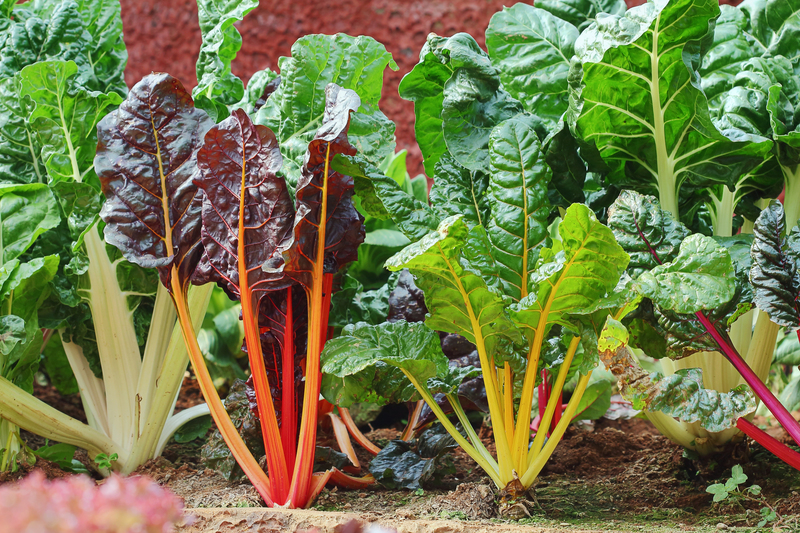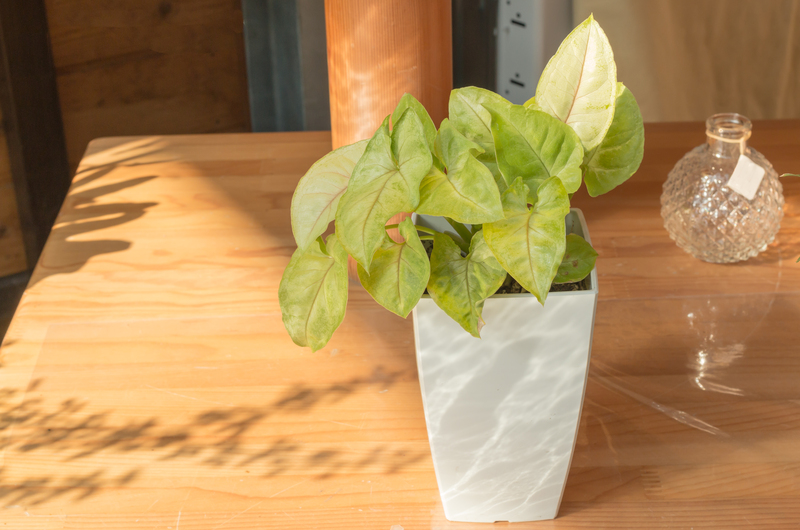Revitalizing Dirt with Everyday Organic Refuse
Posted on 07/09/2025
Revitalizing Dirt with Everyday Organic Refuse: A Sustainable Approach
In an era marked by growing environmental consciousness and a pressing need for sustainable agricultural practices, revitalizing dirt with everyday organic refuse is gaining renewed attention. Homeowners, hobby gardeners, and farmers alike are discovering the power of common kitchen and yard scraps not just to reduce waste but to enrich soil health and boost plant growth. This thorough guide explores the principles, benefits, techniques, and best practices for breathing new life into your garden soil using the humble refuse you produce daily.

Understanding Soil Revitalization
Before diving deep into effective techniques, it's essential to grasp why revitalizing soil is so crucial. Healthy dirt isn't merely a substrate for plant roots; it is a living ecosystem teeming with microscopic life. Nutrient-rich, well-structured earth supports plant health, conserves water, suppresses disease, and increases yields. Unfortunately, repeated cultivation and excessive use of chemical fertilizers can strip your garden dirt of its natural vitality--a setback you can easily correct by integrating everyday organic refuse into your routine.
What Is Organic Refuse?
Organic refuse is any biodegradable waste derived from plants or animals, typically originating from kitchens, gardens, and even some paper products. By choosing to reuse these scraps instead of discarding them, you minimize landfill contributions and return valuable nutrients back to the earth, revitalizing soil naturally and affordably.
- Kitchen scraps: Fruit and vegetable peels, coffee grounds, tea bags, eggshells, stale bread
- Yard trimmings: Grass clippings, leaves, small branches, dead plants
- Paper materials: Shredded newspaper, cardboard, uncoated paper towels
The Benefits of Using Everyday Organic Waste to Improve Your Garden Soil
1. Improved Soil Fertility
When you harness organic kitchen refuse and yard waste, you create rich compost or mulch loaded with nutrients such as nitrogen, phosphorus, and potassium. This steady, natural supplementation supports robust plant growth without relying on synthetic fertilizers, whose effects are often short-lived and can harm beneficial microbes.
2. Enhanced Soil Structure
Adding diversified organic matter to your garden dirt helps improve its structure--promoting better aeration, water retention, and root penetration. Soils high in organic content tend to crumb easily, making them more accommodating for plant roots and less susceptible to compaction.
3. Boosted Microbial Activity
Revitalizing dirt with household organic waste encourages the proliferation of beneficial soil microorganisms. These microbes break down complex organic compounds, releasing nutrients in plant-accessible forms and suppressing disease-causing pathogens.
4. Waste Reduction
Repurposing kitchen and yard scraps keeps organic material from languishing in landfills, where it can produce methane--a potent greenhouse gas. Instead, you actively participate in a sustainable, closed-loop system that fortifies your garden and helps the environment.
5. Eco-Friendly Gardening
Employing everyday organic waste for soil enrichment exemplifies sustainable gardening at its finest. It nurtures a harmonious relationship between your household and the ecosystem beyond, demonstrating environmentally responsible resource management.
Effective Methods to Revitalize Soil Using Everyday Organic Refuse
There are multiple ways to return organic matter to the earth. Choose the approach that best fits your available space, labor capability, and time horizon.
Composting: Nature's Ultimate Recycler
Composting is the most popular and efficient way to process organic kitchen and yard waste. This method transforms your refuse into "black gold"--a nutrient-dense amendment that dramatically revitalizes garden soil.
- Start a compost pile or bin: Layer green (nitrogen-rich) and brown (carbon-rich) materials. Green materials include vegetable peels, coffee grounds, and grass clippings. Brown materials include leaves, cardboard, and shredded paper.
- Time and aeration: Turn the pile every week or two to aerate and speed decomposition. Within a few months, you'll harvest crumbly, dark compost ready to invigorate your soil.
- Application: Top-dress your beds or mix the compost into existing dirt to replenish nutrients and improve structure.
Vermicomposting: Worm Power for Soil Health
Vermicomposting utilizes earthworms (typically red wigglers) to break down organic refuse even faster and more efficiently. The worms' digestive processes generate castings (worm manure), which are remarkably rich in plant-available nutrients and beneficial microbes.
- Set up a simple indoor or outdoor vermicompost bin.
- Feed kitchen scraps--worms excel at processing fruit and vegetable waste.
- Harvest the castings to mix into potting soil or sprinkle on garden beds.
Mulching with Organic Refuse
Mulching is an excellent way to revitalize garden dirt and regulate soil temperature while simultaneously suppressing weeds and conserving moisture. Many items from your yard and home can function as mulch.
- Grass clippings, leaves, and shredded newspaper can be layered around plants.
- Allow the mulch to decompose slowly, feeding nutrients into the soil over time.
- Refresh mulch layers periodically to maintain their benefits.
Bokashi: Fermenting Kitchen Waste
- Place your kitchen waste in a specialized bokashi bucket, adding a starter (inoculated bran) with each layer.
- After a few weeks, the pre-composted material is ready to be buried in your garden, where it finishes decomposing and delivers a quick burst of nutrients to the adjacent soil.
What Everyday Organic Refuse Can Be Used?
Choosing the right organic kitchen and garden waste is key to effective dirt revitalization. Not all refuse is created equal; some is ideally suited to composting and mulching, while others should be used with caution.
Best Items for Soil Revitalization
- Fruit and vegetable scraps
- Coffee grounds and filters
- Tea bags (ensure they are plastic-free)
- Eggshells (crushed for faster decomposition)
- Grass clippings, leaves, and wood chips (untreated)
- Stale bread and grains
Items to Avoid or Limit
- Oily foods, meat, fish, and dairy (unless using bokashi; otherwise, they attract pests and break down more slowly)
- Pet waste (may contain harmful pathogens)
- Glossy, colored, or coated paper products
- Diseased plant material and invasive weeds (which can persist in compost)
- Charcoal ash or large woody materials
Step-by-Step Guide: Starting a Simple Compost Program
1. Choose the Right Location
Select a level, well-drained spot that's convenient to your kitchen and garden--yet not so close that odors or pests become a concern.
2. Set Up Your Compost Bin or Pile
You can purchase a commercial compost bin, build a simple three-sided enclosure with wood or wire, or simply heap your waste in a pile.
3. Add Materials in Layers
- Greens (wet, nitrogen-rich): vegetable scraps, coffee grounds, grass clippings
- Browns (dry, carbon-rich): leaves, shredded newspaper, straw
Aim for a ratio of roughly three parts browns to one part greens to keep your pile balanced and odor-free.
4. Maintain and Monitor
- Turn or aerate your compost every one to two weeks.
- Check moisture: it should feel like a wrung-out sponge.
- If the pile stinks, add more browns. If it's not decomposing, add more greens and moisture.
5. Harvest and Use
After three to six months (sometimes sooner in warm climates or with frequent turning), your compost will become dark, crumbly, and earthy-smelling. This is now ready for revitalizing your garden dirt!
How to Apply Organic Refuse to Optimize Soil Health
Mixing into Soil
Work finished compost, worm castings, or well-rotted organic refuse into existing garden soil before planting. This feeds the earth and fosters a robust environment for root development.
Top Dressing
Spread a half-inch to one-inch layer of finished compost around established plants, shrubs, and trees. Water in well to help nutrients percolate into the root zone.
Sheet Mulching (Lasagna Gardening)
Layer newspaper, cardboard, leaves, and kitchen waste directly onto dormant beds or lawns. Over a season, this "lasagna" approach smothers weeds and decomposes to enrich the native dirt below.
Troubleshooting Common Organic Refuse Pitfalls
While the benefits of revitalizing dirt with kitchen scraps and yard waste are immense, some common issues can arise:
- Unpleasant Odors: Usually caused by too much green material or poor aeration. Remedy by adding more browns and turning the pile often.
- Pests: Avoid adding meat, dairy, or oily foods to reduce rodent and insect problems.
- Slow Decomposition: Ensure proper balance, moisture, and aeration. Chop larger items for faster breakdown.

Success Stories: How Organic Refuse Turns Dirt into Abundant Gardens
Across the globe, gardeners and farmers are proving how everyday organic waste can transform even the most depleted dirt into fertile ground. Community gardens in cities like New York and San Francisco compost tons of food and yard scraps annually, transforming vacant lots into green oases brimming with produce. Home gardeners report larger blooms, healthier vegetables, and fewer pests--all by closing their own household resource loop.
Conclusion: Make Revitalizing Soil with Organic Refuse Your New Habit
By adopting the practice of revitalizing dirt with everyday organic refuse, you help create healthier soil, reduce waste, and promote sustainable gardening for future generations. Whether you're managing a backyard plot or a few houseplants on a balcony, you're never too small to make a difference. Every banana peel, coffee filter, and pile of autumn leaves is a building block for a more vibrant, resilient, and bountiful garden.
Begin today--your kitchen scraps will thank you, and so will your soil.
- Start collecting your organic kitchen waste now.
- Experiment with composting, mulching, or bokashi fermentation.
- Share your surplus compost with neighbors or community gardens.
With simple steps and consistent effort, revitalizing soil using everyday organic refuse becomes both a sustainable habit and a deeply rewarding part of living closer to nature.



